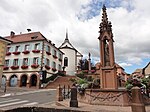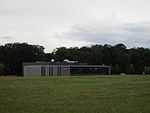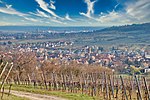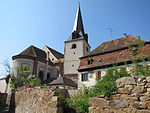History of Alsace
The history of Alsace has been influenced by the Rhine and its tributaries, a favorable climate, fertile loess soils, and the region's relative accessibility through and around the Vosges. It was first inhabited by early modern humans during the Paleolithic. Peoples speaking Celtic and Germanic languages occupied the region prior to its conquest by Roman armies under the command of Julius Caesar. In the centuries after the fall of Rome the area acquired its name and identity as an early medieval pagus. Since then, suzerainty and effective control have shifted among competing European powers, including the Kingdom of Alamannia, the Frankish Empire, Lotharingia, the Holy Roman Empire, France, and the German Empire. Alsace has remained part of France since the end of the Second World War.
Excerpt from the Wikipedia article History of Alsace (License: CC BY-SA 3.0, Authors).History of Alsace
D 422, Molsheim
Geographical coordinates (GPS) Address Nearby Places Show on map
Geographical coordinates (GPS)
| Latitude | Longitude |
|---|---|
| N 48.5 ° | E 7.5 ° |
Address
D 422
67560 Molsheim
Grand Est, France
Open on Google Maps










